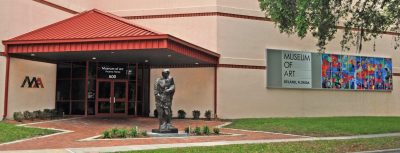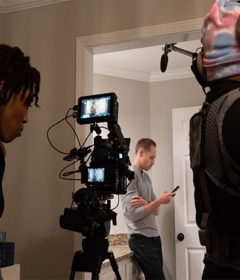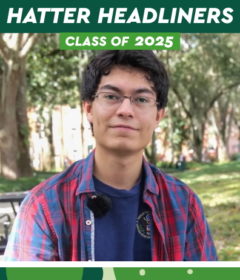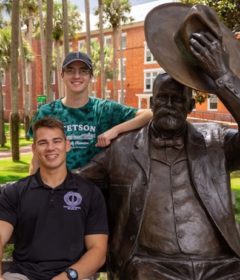Lessons Today from the Harlem Renaissance
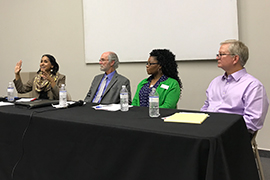
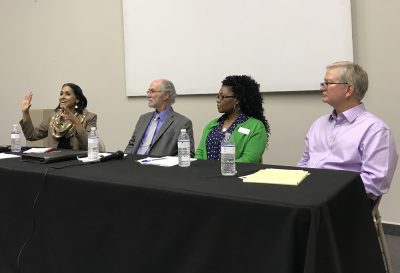
A panel of four Stetson University professors gathered at the Museum of Art – DeLand recently to explore the rich history of the Harlem Renaissance, while recognizing that its dreams of equality remain unrealized 100 years later.
The panel discussion, “Then and Now: Reflecting on the Harlem Renaissance,” coincided Feb. 8 with Black History Month and the museum’s current exhibit, which features more than 85 pieces of African-American art, including ones by the major artists of the Harlem Renaissance.
The exhibit, “African American Art: We Too Dream America,” will remain on display until March 17. Stetson students receive free admission to the museum at 600 N. Woodland Blvd., across the street from campus, and Cultural Credit is available.
The Harlem Renaissance was a time of explosive creativity in the arts, as the Great Migration brought African-Americans from the South into New York City, Chicago and other Northern cities for better opportunities and economic prosperity, the professors said. This pivotal period began around 1919, flourished through the 1920s and began to wane after the stock market crashed in 1929.
America celebrated the music of band leader Duke Ellington and other jazz greats who performed in the Harlem speakeasies, and lauded the writing of Zora Neale Hurston and Langston Hughes. But these African-Americans still confronted racial stereotypes, discrimination and societal oppression.
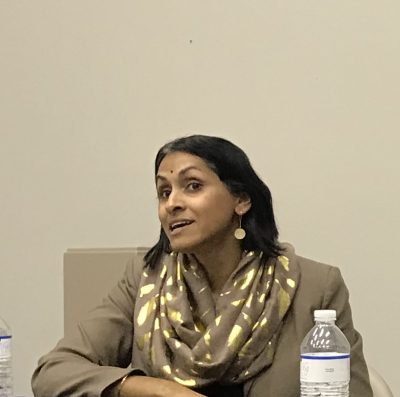
“Something I find to be deeply, deeply distressing is so much of what was brought to light then, in the ‘20s and 30s, is not just still occurring today, but in many cases occurring even in worse forms and conditions,” said Rajni Shankar-Brown, Ph.D., associate professor and Jessie Ball duPont Chair of Social Justice Education.
“As an example, our schools were extremely segregated during that time. Well, today, in 2019, many of our public schools are even more segregated than in previous decades. Economic and racial segregation are deeply entrenched and pervasive in our schools. It is horrific,” she said, while reminding the audience that everyone must continue to collectively work toward equality and justice.
Shankar-Brown, also a Board member of the National Coalition for the Homeless, organized the panel discussion on Friday night, Feb. 8. Joining her were Stetson English Professor Joel Davis, Ph.D.; Assistant Professor of Education and STEM specialist Vernita Glenn-White, Ph.D.; and Assistant Director of Bands Patrick Hennessey, Ph.D., as well as the museum’s Curator of Education Pam Coffman, who regularly collaborates with Shankar-Brown on various community engagement and activism projects.
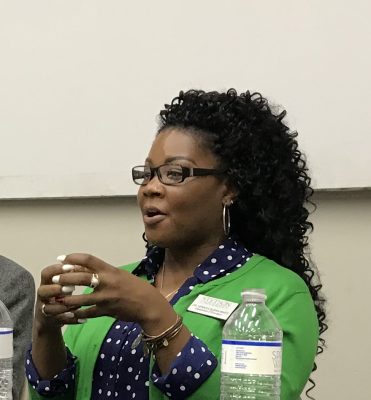
Black artists thrived during the Harlem Renaissance, but today, the challenge is for the black community to thrive in STEM fields (Science, Technology, Engineering and Mathematics), said Education Professor Glenn-White, a former district math specialist for Orange County Public Schools.
“My push is to develop that and have a technological STEM renaissance, as you would say, for the black community because before STEM was a term, we had black Americans in all of those fields before they merged to STEM,” she told the audience.
“If you look at Silicon Valley, black Americans only represent two percent of their entire population, but a lot of the black Americans were the foundation of those technological movements,” she said.
Professor Davis, who teaches an African-American poetry course at Stetson, said Harlem’s artists and large black middle class flourished in the Roaring ‘20s, which saw the biggest concentration of wealth in history happening in America. This supported the arts, including African-American poets and novelists.
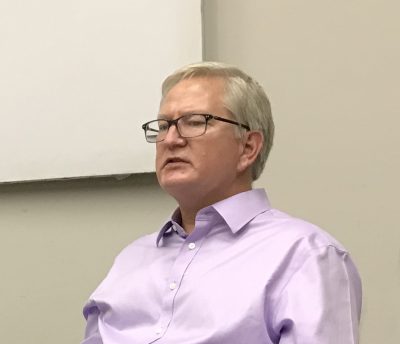
“All of it jells at this particular time,” Davis said. “The voice and the voices of the Harlem Renaissance were able to amplify African-Americans’ voice. It was an inflection point in American culture. … and most of the things we write about American pop culture, we can trace back to the Harlem Renaissance in one way or another.”
Hennessey, also director of the Stetson University Jazz Ensemble, recounted how Duke Ellington and his jazz orchestra played for five years at the Cotton Club, a white-owned speakeasy built in a plantation-style for a whites-only wealthy clientele.
Although the black performers entertained white audiences, they gave voice to the black experience through the titles of their music, such as “Black, Brown and Beige,” composed by Duke Ellington and performed at Carnegie Hall, which tells the story of African-Americans from slavery times through the present, Hennessey said.
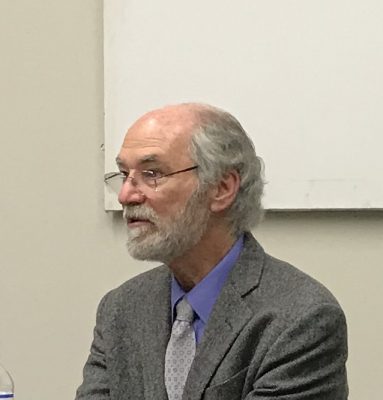
Other experts have noted that this new racial pride laid the groundwork for the Civil Rights Movement in the 1950s and 1960s, and continues to influence America today.
“History is real. It’s still vibrant today,” said Hennessey, who teaches courses in jazz history. “And so when we talk about the Harlem Renaissance, the Harlem Renaissance kicked off something for us that we all have learned from and continue to grow from.”
If You Go:
The Museum of Art-DeLand is open Tuesdays through Sundays. For more info about the museum and the exhibit, “African American Art: We Too Dream America,” visit the museum’s website or call, 386-734-4371.
